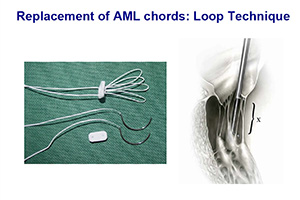Keynote Lecture—Transmitral hypertrophic obstructive cardiomyopathy (HOCM) repair
Abstract
Hypertrophic obstructive cardiomyopathy (HOCM) is a heterogenous disease causing obstruction of the left and/or right ventricular outflow tract (LVOT and/or RVOT, respectively). The main symptoms include dyspnea on exertion and syncope, and in severe cases, subsequent development of heart failure symptoms with end stage heart failure occurs. In a certain number of patients, surgical intervention is required since pharmacological and/or interventional treatment using transcoronary ablation of septal hypertrophy (TASH) does not relieve symptoms.
The primary goal of any surgical technique is to relieve LVOT obstruction, avoid the occurrence and/or recurrence of systolic anterior movement (SAM) of the anterior mitral leaflet (AML) and—if present—reduce mitral valve (MV) regurgitation. Depending on the configuration of LVOT obstruction, myectomy with/without MV replacement has been the “gold standard” in surgical treatment of HOCM. However, considering the known disadvantages of artificial valves, MV preserving techniques will improve postoperative outcomes and decrease major adverse events in the long term.
We describe the currently available operative strategies for treatment of HOCM. Special consideration is given to minimally invasive access with subaortic LVOT myectomy and complete resuspension of the AML to treat both HOCM and MV regurgitation.
Cover






